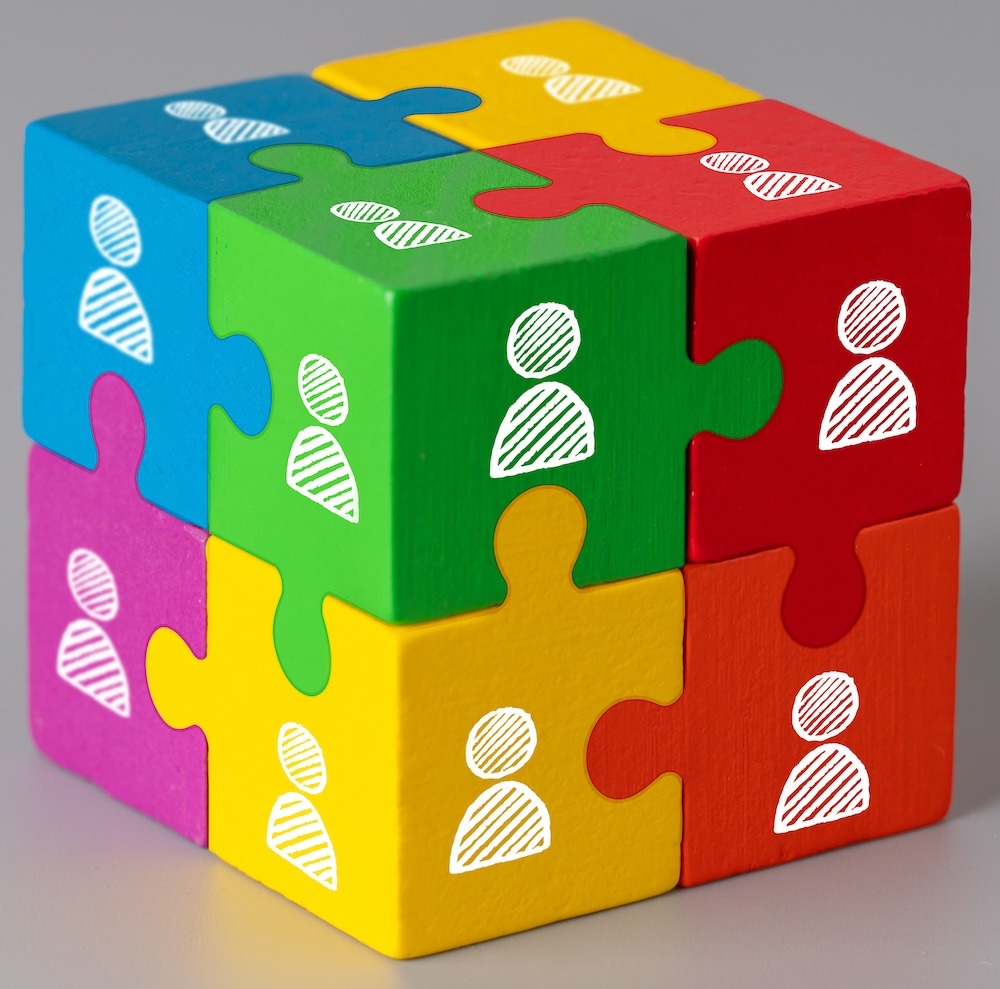There are a lot of ways we can talk about the employee experience at work – it’s related to more than just the physical office and its amenities, the organization’s culture and the benefits package. It includes all the technology they use at work, too.
“Digital employee experience,” or DEX, describes the ways that employees interact with technology in their roles – everything from communication apps and productivity tools to company resources and admin tasks to the hardware they run on (like laptops and point-of-sale systems, for example).

Let’s take a deeper look into DEX to explore:
- Why it’s important
- Key components
- How to provide a great DEX (with examples!)
- Common DEX challenges – and how to address them
- The future of DEX
1) Why is the Digital Employee Experience so important?
Consider the difference in experience between an employee who must keep track of two dozen login credentials versus the employee whose organization uses single sign-on – and only has to remember one. It’s like comparing a trip to the DMV with a leisurely stroll through a park.
A) Support the remote and hybrid experience
 Maintaining a good DEX is important for motivation and morale – everyone knows how frustrating it can be to use buggy or outdated software – but it’s especially important for organizations with hybrid or fully remote staff because, for those employees off-site, technology is the only avenue for interaction – and work – at work.
Maintaining a good DEX is important for motivation and morale – everyone knows how frustrating it can be to use buggy or outdated software – but it’s especially important for organizations with hybrid or fully remote staff because, for those employees off-site, technology is the only avenue for interaction – and work – at work.
For instance, platforms that facilitate video conferencing, project management and instant messaging help maintain a sense of community and collaboration among team members working from different locations. By providing a seamless digital experience, organizations can help remote employees feel just as engaged and connected as those in the office.
B) Enhance employee engagement and productivity
When employees have access to user-friendly tools that streamline their workflows, they can focus on their core responsibilities, rather than getting bogged down by cumbersome processes. For example, implementing a centralized communication platform – like Reward Gateway | Edenred’s SmartHub, which acts as an intranet linking out to all employee programs and resources to make self-service easy and efficient – can reduce the time spent searching for information or switching between multiple applications. This not only enhances productivity, but also fosters a sense of empowerment, as employees feel equipped to perform their best work.

In our recent Appreciation Index report, we found that employees who had more control over their working patterns felt significantly more appreciated than those who almost never had this type of control (70 vs 57.9 [against a global average of 65]).
C) Attract and retain talent
In today’s competitive job market, a stellar DEX can be a game-changer. Candidates today are looking for employers who invest in their experience and provide the tools necessary for success. For instance, offering flexible work arrangements, modern technology and a supportive digital environment can set your organization apart from others. Furthermore, when employees feel valued and supported through a positive DEX, they are less likely to seek opportunities elsewhere, reducing turnover.
2) The key components of DEX
A) Personalization
In a world where one-size-fits-all solutions are becoming obsolete, personalization is key. Employees should have the ability to customize their digital workspace to suit their preferences and work styles. Whether it’s choosing their dashboard layout or selecting which notifications to receive, personalization helps employees feel more in control and engaged.
B) User interface (UI) and experience (UX)
| RGER pro tip: Name your employee experience program (or even just your intranet!) something fun and catchy to create appeal and engage employees with it. |
A user-friendly interface is essential for a positive DEX. If employees spend more time figuring out how to use a tool than actually using it, you’ve got a problem. The user experience (UX) should be seamless and intuitive – bonus points for enjoyable.
C) Accessibility
With the rise of remote work and flexible schedules, mobile accessibility is no longer a luxury; it’s a necessity. Employees should be able to access their tools and resources from their smartphones or tablets, allowing them to stay productive on the go. Additionally, ensuring that tools are accessible to all employees, including those with disabilities, is crucial for fostering an inclusive workplace.
 D) Training and support
D) Training and support
Even the best tools experience hiccups. That’s why a strong support system is essential. Whether it’s a dedicated IT help desk, comprehensive FAQs or user forums, employees should know where to turn when they need help. Moreover, providing ongoing training ensures that employees are equipped to use the tools effectively, maximizing their potential.
3) How to provide a great digital employee experience
The foundation of a great DEX starts with the tools employees use every day.
Investing in user-friendly software makes a world of difference. Look for platforms that prioritize intuitive design and seamless functionality – like tools that integrate well with existing systems, reducing the need for employees to juggle multiple logins and interfaces.
A user-friendly tool is like a well-organized toolbox – everything is easy to find, and you can get to work without unnecessary delays.
A) Establish and measure KPIs
 To truly understand the effectiveness of your digital employee experience, it’s essential to establish key performance indicators (KPIs) that measure DEX. By regularly measuring these KPIs, you can identify areas for improvement and track progress over time. These could include metrics such as:
To truly understand the effectiveness of your digital employee experience, it’s essential to establish key performance indicators (KPIs) that measure DEX. By regularly measuring these KPIs, you can identify areas for improvement and track progress over time. These could include metrics such as:
- Employee satisfaction scores
- Tool adoption rates
- Productivity levels
- Task completion rates
B) Provide ongoing training and support
Provide comprehensive onboarding for new tools and ongoing training sessions for all employees. This could include workshops, webinars or even short video tutorials that employees can access at their convenience. Additionally, ensure that there’s a robust support system in place, whether it’s a dedicated IT help desk or a peer support network.
C) Gather feedback and adapt
Creating a great DEX is an ongoing process, and gathering feedback from employees is crucial for continuous improvement. Regularly solicit input through surveys, focus groups or informal check-ins to understand how employees feel about the tools and resources they use. Are there features they love? Are there pain points that need addressing? Use this feedback to adapt and refine your digital environment.
4) 3 common DEX challenges – and how to solve them
Challenge: High costs
 New technology often comes with a heavy price tag, which is a common hindrance to DEX improvements. The most user-friendly software, training programs and support systems can really strain a budget and are often the first line items kicked off when the belt tightens.
New technology often comes with a heavy price tag, which is a common hindrance to DEX improvements. The most user-friendly software, training programs and support systems can really strain a budget and are often the first line items kicked off when the belt tightens.
Solution: Consider a phased approach to implementing new tools, or start with a pilot program to test the waters before committing to a full rollout. Explore open source or cost-effective alternatives that can provide similar functionalities without breaking the bank. Prioritize investments based on employee feedback and the potential impact on productivity, ensuring that every dollar spent contributes to a better DEX.
Challenge: Siloed technology
In many organizations, different departments use tools that don’t integrate well with one another – if at all. This siloed technology can lead to inefficiencies, as employees may struggle to collaborate effectively across teams.
Solution: Prioritize integrated tools that promote collaboration and data sharing. Look for platforms that offer APIs or built-in integrations with other software your organization uses. The RGER SmartHub platform integrates with both Teams and Slack, for example, enabling features like RSS feeds for the recognition wall, comms sharing and more. And, critically, when adopting any technology, collaborate across departments to ensure that everyone’s needs are considered.
Challenge: Resistance to change
 Nobody likes to upend their entire workflow and knowledge base to adopt a brand new tool – even if the one being replaced was far from ideal, and even if those same employees have been asking for change. Change is a psychological burden for employees who feel tasked to the max, even when they know that the change is positive and will save them time and energy later.
Nobody likes to upend their entire workflow and knowledge base to adopt a brand new tool – even if the one being replaced was far from ideal, and even if those same employees have been asking for change. Change is a psychological burden for employees who feel tasked to the max, even when they know that the change is positive and will save them time and energy later.
Change can be daunting, and many employees may resist adopting new tools or processes. This resistance can stem from a fear of the unknown, concerns about their ability to learn new systems, or simply a preference for the status quo.
Solution: Involve employees in the decision-making process when selecting new tools. By soliciting their input and addressing their concerns, you can foster a sense of ownership and buy-in. Additionally, provide clear communication about the benefits of the new tools and how they will enhance employees’ daily work. Offering incentives for early adopters or champions can also help create enthusiasm around the change.
5) The future of digital employee experience
As we look ahead, the future of DEX is poised to be significantly shaped by advancements in AI and emerging technologies. These innovations promise to enhance how employees interact with their work environments, leading to more personalized, efficient and engaging experiences.
To be clear – AI is, itself, still an emerging technology. There are a lot of promises about what it will do for us, alongside threats about all the jobs it might replace, so it’s important to take predictions with a grain of salt.
While AI has changed, and will continue to change, the working landscape in an ever-widening array of roles, human experience, intuition and perspective cannot be replaced by a machine, and those factors are critical to ongoing success and successful evolution.
A) Personalized experiences
AI will enable tailored digital experiences by analyzing employee data to recommend relevant tools and training. This ensures each employee receives personalized support aligned with their preferences and career goals.
B) Intelligent virtual assistants
AI-powered virtual assistants streamline workflows by helping employees navigate tools, answer questions and troubleshoot issues independently, enhancing overall efficiency and satisfaction.
Word to the wise: A poorly trained or coded assistant can increase frustration levels instead of soothe them; be sure that any AI assistants your organization deploys have the capacity to resolve and escalate issues correctly.
C) Enhanced collaboration tools
 AI can improve collaboration among remote teams by automating communication, scheduling and analyzing team dynamics to suggest optimal collaboration strategies, ensuring effective teamwork. AI call transcription and summarization software can save your organization countless hours on note taking, for example, and many project management platforms have automation paths available to auto-assign certain types of tasks to the right people, as well as move work around without losing important details.
AI can improve collaboration among remote teams by automating communication, scheduling and analyzing team dynamics to suggest optimal collaboration strategies, ensuring effective teamwork. AI call transcription and summarization software can save your organization countless hours on note taking, for example, and many project management platforms have automation paths available to auto-assign certain types of tasks to the right people, as well as move work around without losing important details.
D) Data-driven insights
AI provides valuable insights into employee engagement and productivity by processing digital interactions and data in ways humans can’t, allowing HR to track interactions with digital tools and proactively address issues, leading to a better employee experience.
E) Continuous learning and development
Adaptive learning platforms powered by AI customize training based on individual learning styles and progress, fostering a culture of continuous growth and ensuring relevant training delivery.
F) Improved accessibility and inclusivity
AI advancements enhance workplace accessibility through real-time transcription and translation, ensuring all employees can engage fully with digital tools, promoting inclusivity and diversity.
Learn more about how Reward Gateway | Edenred can help you make your corner of the world a better place to work by scheduling a demo with one of our friendly engagement experts!

 Emily Mellwood
Emily Mellwood



